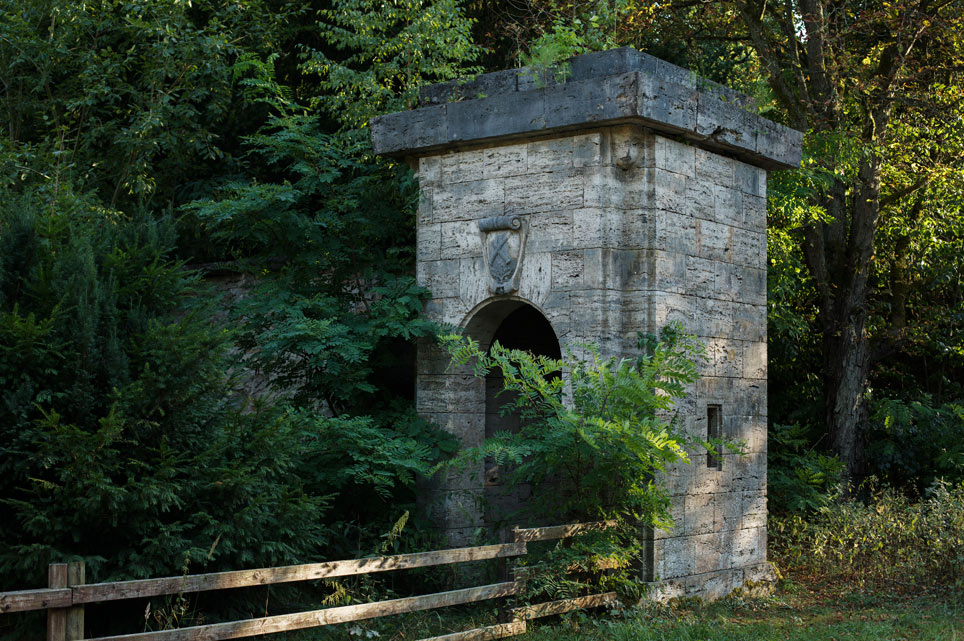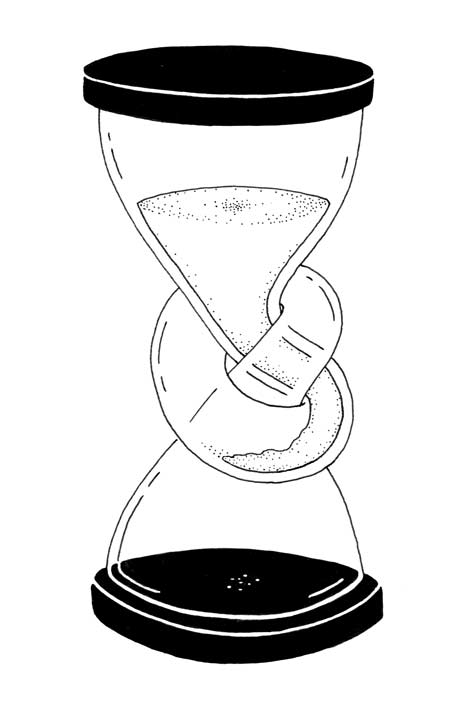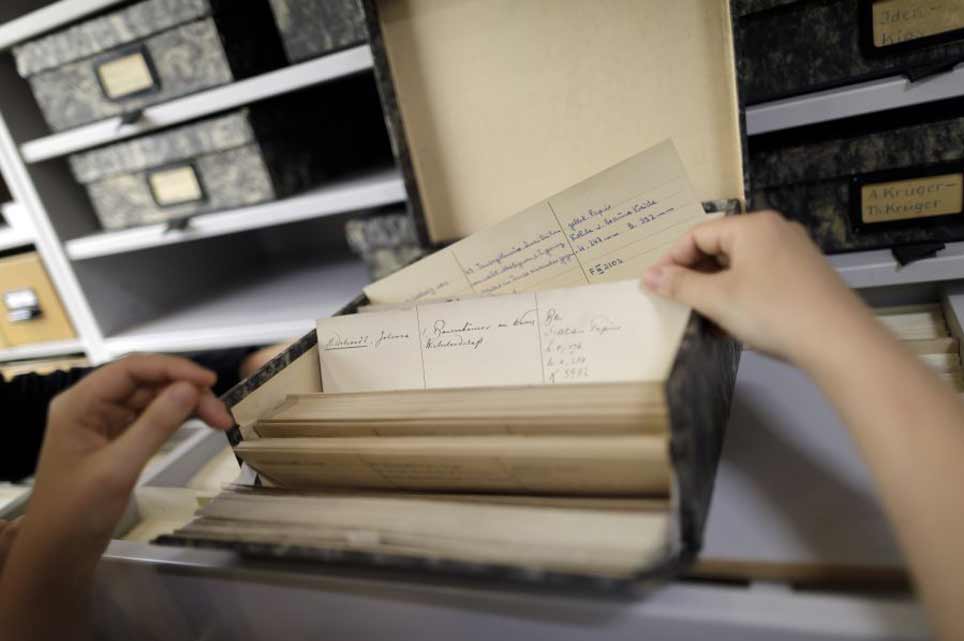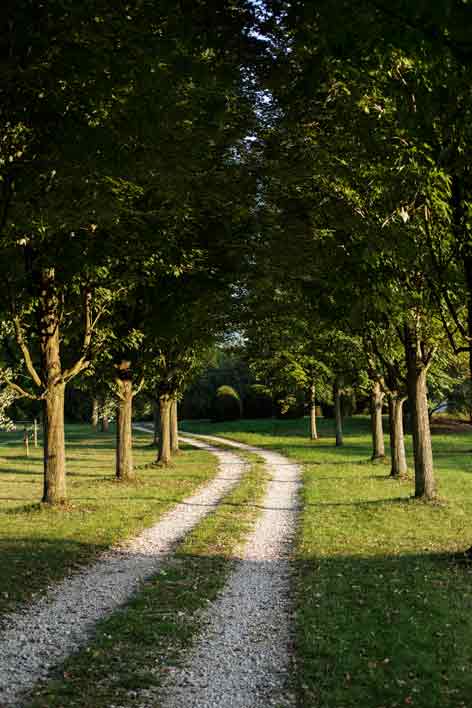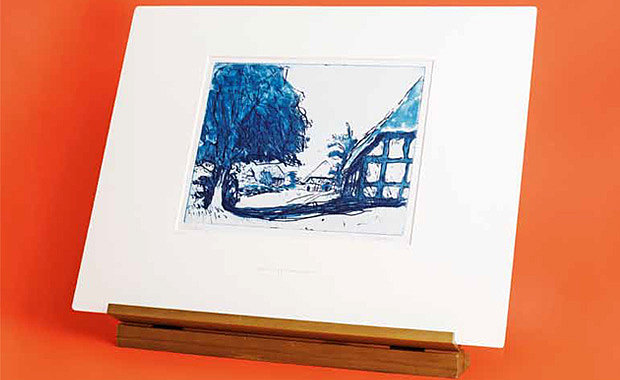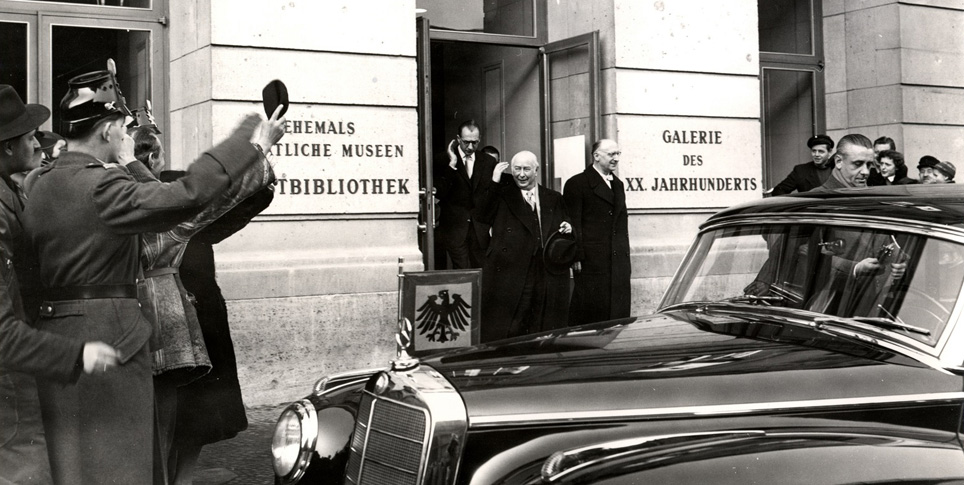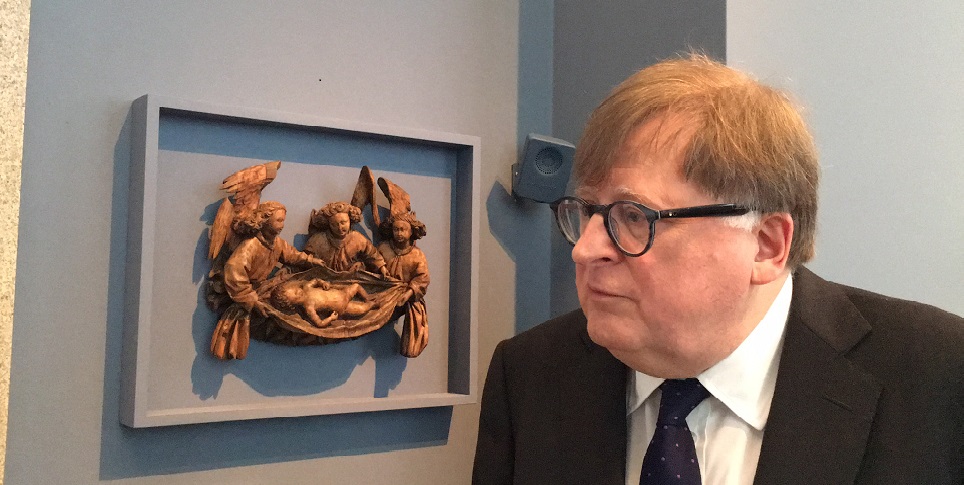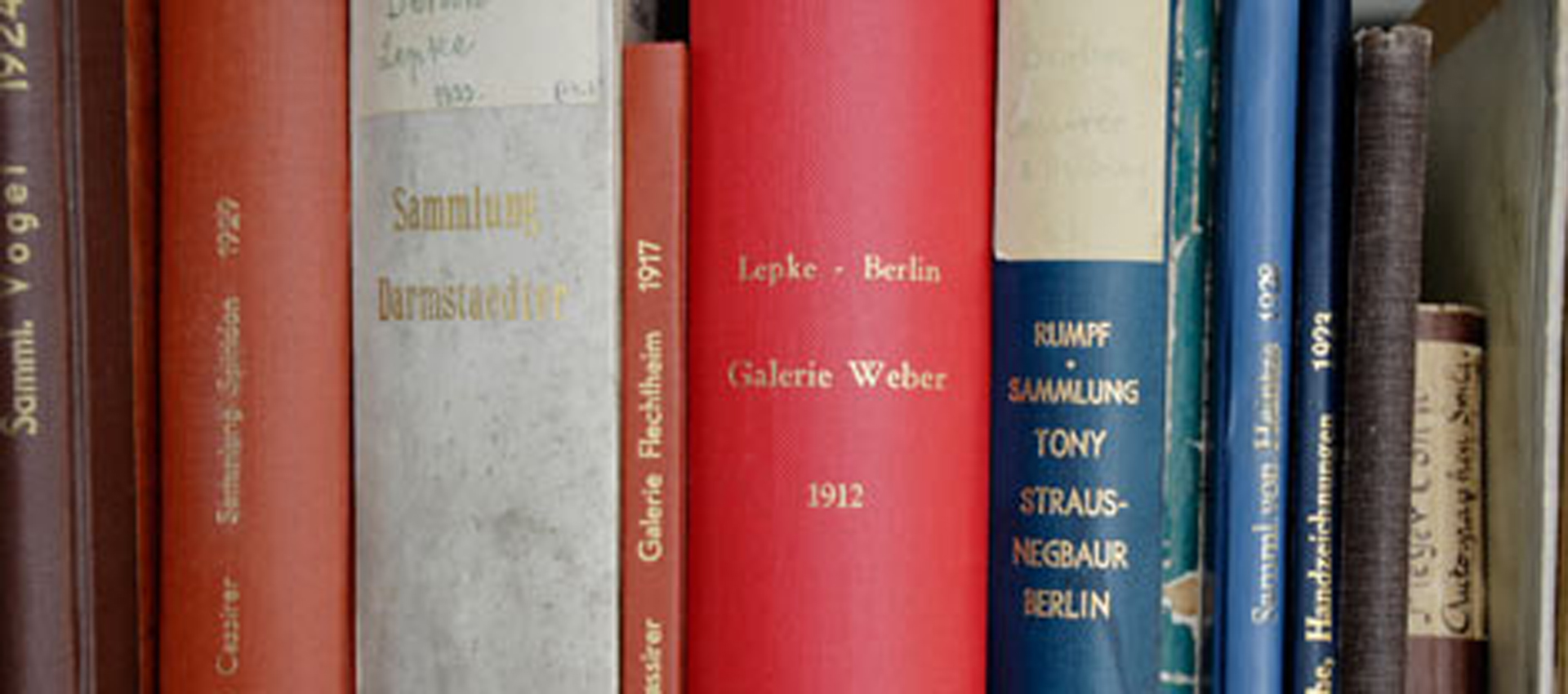A unique research project reconstructs the art collection of Rudolf Mosse, a publisher in Berlin
People who have hit bottom can’t fight back. The Lachmann-Mosse family had clearly hit bottom in the spring of 1933. Their business, Mosse Verlag, the publishing house with the flagship newspaper Berliner Tageblatt, was in financial trouble. Moreover, Hans and Felicia Lachmann-Mosse and their three children were assimilated Jews, which made them ideal targets for Nazi anger and greed. Rudolf Mosse, who founded the business, died in 1920. His son-in-law signed a contract in which he “leased” his business for the next 15 years in return for an annuity, pledging the rest of his property in Germany as security. In return, the family was officially allowed to leave Germany, which was under Adolf Hitler’s rule, for Switzerland.
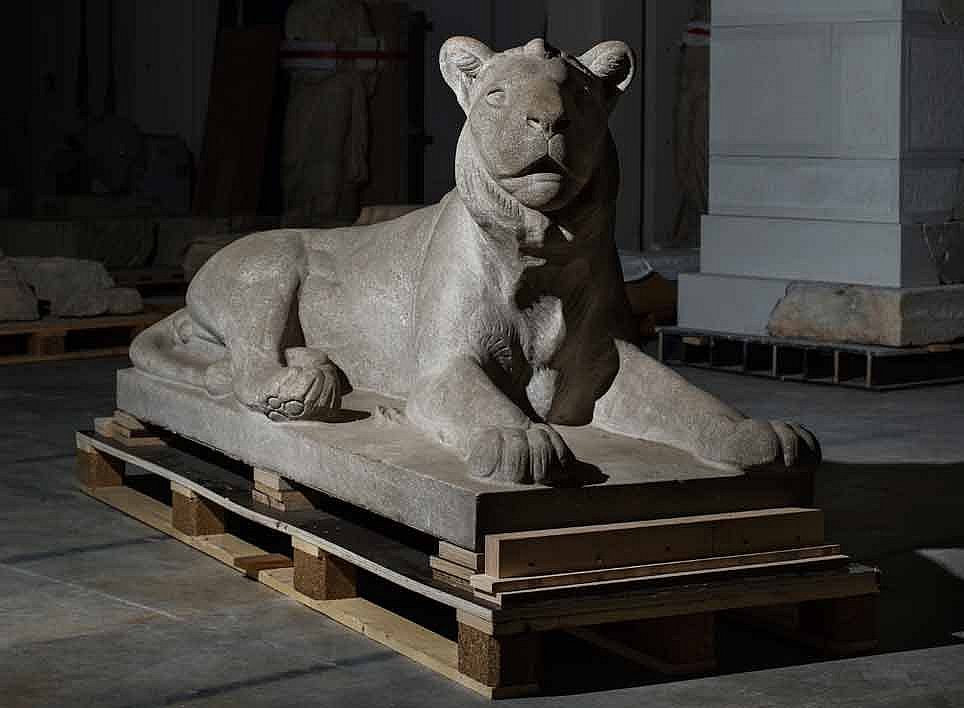
Before the presentation: The Liegende Löwe from the Rudolf Mosse collection is currently still in Staatliche Museen zu Berlin’s storage. Starting in summer 2019 it will welcome visitors to Museumsinsel in the James Simon Gallery. © Christoph Mack
They left behind their art collection, which former newspaper mogul Rudolf Mosse had acquired over decades. His villa on Leipziger Platz, a bourgeois palace, was both a residence and a gallery with 20 rooms; its nickname was “Mosseum”. Interested residents of Berlin and out-of-town guests interested in contemporary artists and sculptors were able to view the house after making an appointment and a donation to a charitable institution.
When they emigrated in the spring of 1933, the Lachmann-Mosse family could not take the collection with them. The artworks in Schenkendorf, their country manor southeast of Berlin, and their house in Maaßenstraße in Schöneberg also had to stay behind. Most of the art, including paintings by Max Liebermann, Lovis Corinth and Lesser Ury, as well as other possessions, were auctioned off to the highest bidder – but well below their actual value – in 1934/35. The real estate also changed hands at less than market value.
It seems to be a clear case of confiscation of assets under persecution, hence the conditions for restitution appear to exist. But appearances can deceive. Instead, the “Mosse case” is an example of the special problems that can hinder the quick implementation of the Washington Principles.
Before a work of art can be restituted it must be identified twice: once in its present location and once as part of a collection that was confiscated under persecution. In addition, the circumstances surrounding the confiscation must be described in as much detail as possible before restitution can be made.
In the Mosse case this was not simple. A version of the “facts” that gave cause for doubt prevailed for decades. It was widely believed that Mosse Verlag had been insolvent since September 13, 1932; meaning that the property of the personally liable owner was already part of the bankruptcy assets months before the Nazis came to power. George L. Mosse, the son of Hans (1885–1944) and Felicia (1888–1972), always denied this; in his memoirs he wrote about the family business’ “allegedly impending bankruptcy.” But bankruptcy proceedings that began in 1932 are mentioned in virtually all of the literature about the family.
Thanks to the work of the Mosse Art Research Initiative (MARI), a unique cooperation between Freie Universität Berlin, the heirs, and other partners that include Stiftung Preußischer Kulturbesitz (Prussian Cultural Heritage Foundation), an important point was clarified. There is no documentation of the legally established insolvency of Mosse Verlag in the fall before Hitler took power. On the contrary, exactly one year later on September 13, 1933, settlement proceedings were opened as part of winding up the publishing house by the National Socialists. Even though the Berlin files are lost, the proceedings were confirmed by a two-page parallel document in Saxony’s state archive in Leipzig. While Mosse Verlag had financial difficulties in fall 1932, the publishing house was never officially insolvent; this would have to have been registered. This information supports the claim that the Lachmann-Mosse family really did lose its property due to persecution, thus fulfilling the conditions for restitution.
But what exactly must be restituted? Only a few objects have been clearly proven to be part of the Mosse collection. This includes August Gaul’s Liegender Löwe (Reclining Lion), a larger-than-life limestone sculpture. Rudolf Mosse commissioned it around the turn of the 20th century and in 1929, the lion was displayed in his sculpture hall on Leipziger Platz. However, by 1935 at the latest, it had been moved a short distance to guard the entrance to the building which was the Berlin headquarters of the National Socialist Academy of German Jurisprudence at that time. Gaul’s work survived the destruction of the villa and later, the magistrate of East Berlin gave it to the Nationalgalerie (National Gallery) on Museum Island. Gaul’s Lion was restituted to the Lachmann-Mosse heirs in 2015 and in the future, it will receive visitors in the James Simon Gallery. The object’s fate will be documented completely, as will that of the marble sculpture Susanna by Reinhold Begas, which is displayed in the rotunda of the Alte Nationalgalerie of the Staatliche Museen zu Berlin (National Museums in Berlin). It was restituted and then bought by Stiftung Preußischer Kulturbesitz.
But only a few pieces from Rudolf Mosse’s collection have a documented provenance. Judging by the meager descriptions in the catalogues raisonné and auction catalogues of 1934, it must have contained over 1,000 individual works of art. For this reason, MARI’s most important tasks are to reconstruct the inventory and locate the works acquired by Rudolf Mosse in modern collections. Provenance research is in the foreground of the work agreed upon with his heirs; any negotiations leading to restitution take place outside of MARI.
The project has other goals as well. Art historians working with Klaus Krüger at Freie Universität Berlin and the coordinator, Meike Hoffmann, are taking the people who were involved in the dissolution of confiscated collections from 1933 on into account. In this way, they can gain knowledge that goes beyond the Mosse collection.
That said, making today’s public aware of Rudolf Mosse, the great art patron, and his former collection would be a major success for this important research project.
MARI
In March 2017, the Mosse heirs inaugurated the Mosse Art Research Initiative (MARI) together with Freie Universität Berlin. This is the first time that German institutions have cooperated with descendants of the victims of Nazi racial persecution in a public-private partnership. The project is financed by the Deutsches Zentrum Kulturgutverluste (German Lost Art Foundation), the Kulturstiftung der Länder (Cultural Foundation of the German States), and the Mosse Art Restitution Project.
More on this subject: www.mari-portal.de
More on the Mosse Collection
- Reinhold Begas' Susanna from the Mosse Collection (in German)
- Press Release "Provenance Research: Online-Portal on Rudolf Mosse Collection / Acquisitions for Staatliche Museen zu Berlin from the collection"
- Press Release "Stiftung Preußischer Kulturbesitz restitutes art objects from the collection of Rudolf Mosse"






